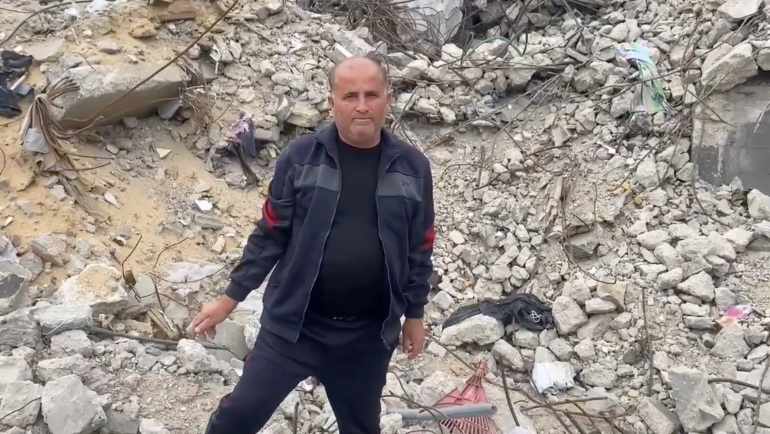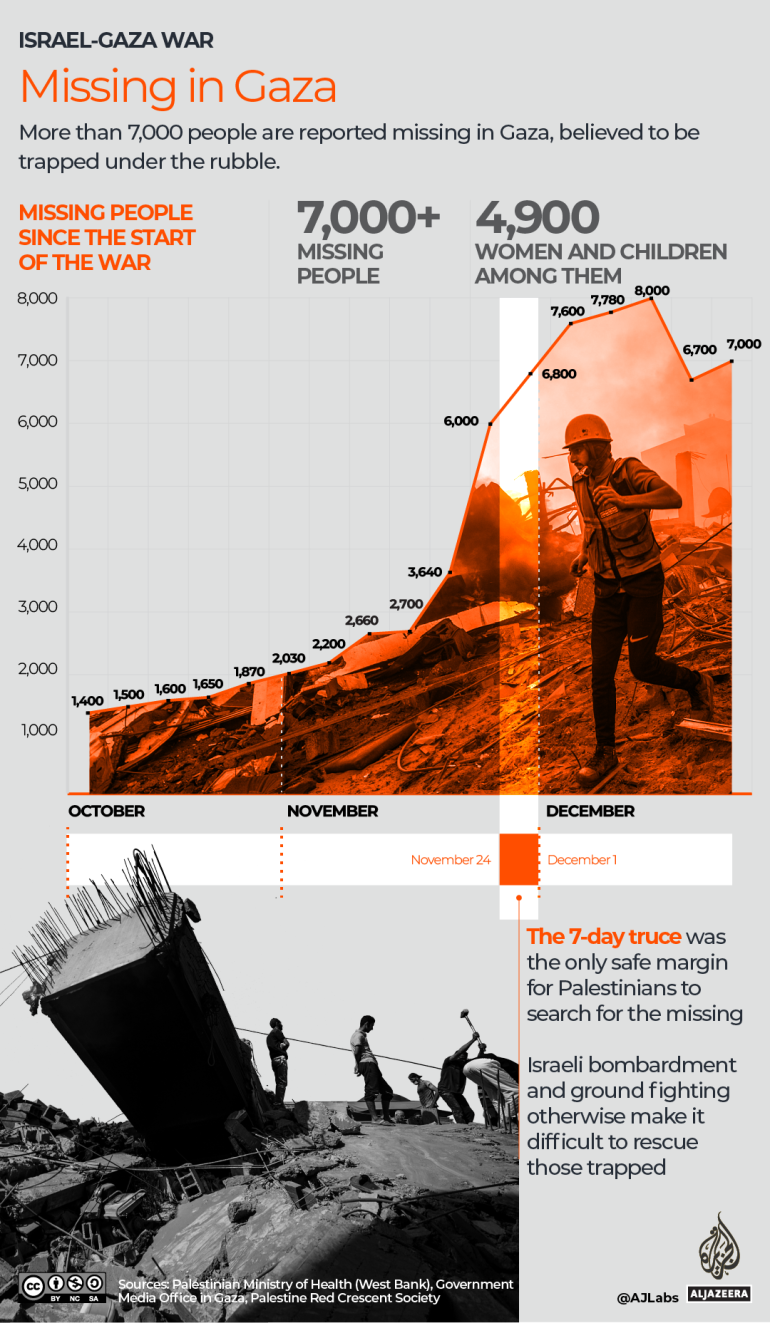Under the rubble: The missing in Gaza
Finding the 7,000 Palestinians believed buried under collapsed buildings is becoming increasingly difficult.
Every morning, 51-year-old Yasser Abu Shamala goes to the place where his family’s house once stood in Khan Younis in the southern Gaza Strip. He starts digging through the rubble with his bare hands, lifting pieces of concrete to try to find members of his family buried under the debris.
Abu Shamala’s family house was bombed by Israeli forces on October 26, demolishing the building and killing his parents, brothers and cousins. The strike killed 22 people with many more trapped under the rubble.

Abu Shamala’s family members are among the more than 7,000 people who are reported missing in Gaza, including 4,900 children and women. The missing are believed to be trapped under bombed buildings, according to Hamas officials in Gaza.
Despite multiple failed attempts, Abu Shamala refuses to quit and has pledged to continue searching for his relatives and recover their bodies from under the ruins of the house. He hopes he can bury them in a cemetery with proper Islamic rituals.

Israel has dropped thousands of bombs on Gaza since October 7, the day the war started with Hamas attacks on southern Israel. The war is believed to be one of the most destructive and fatal in recent times, having killed nearly 21,000 people in Gaza and 1,139 in Israel, wounding nearly 55,000 Palestinians and at least 8,730 in Israel, and destroying or damaging at least 60 percent of Gaza’s residential units.
As the war continues, finding and rescuing those trapped under the rubble is becoming increasingly difficult.